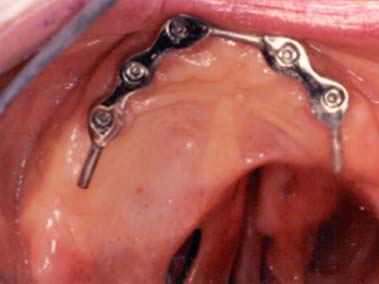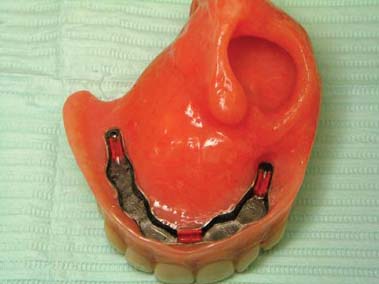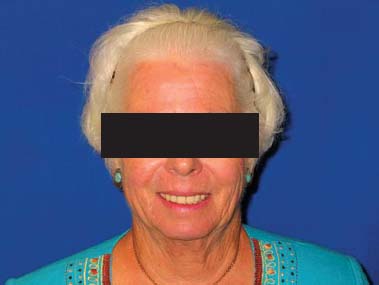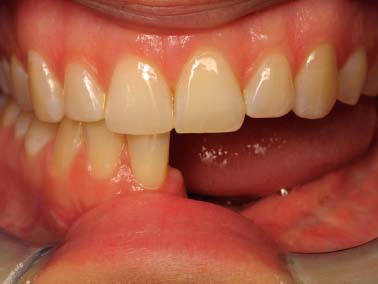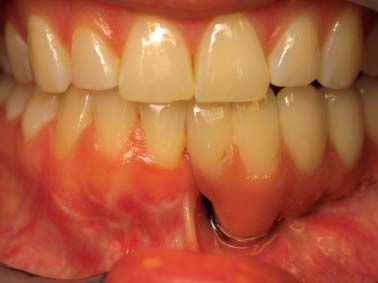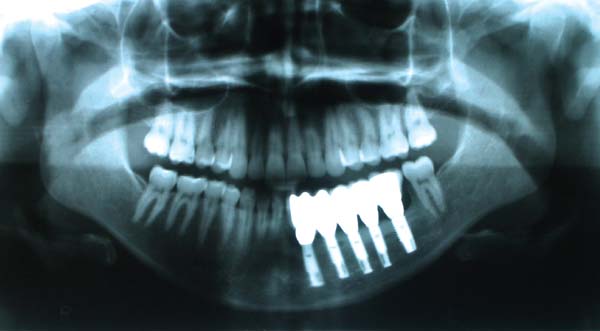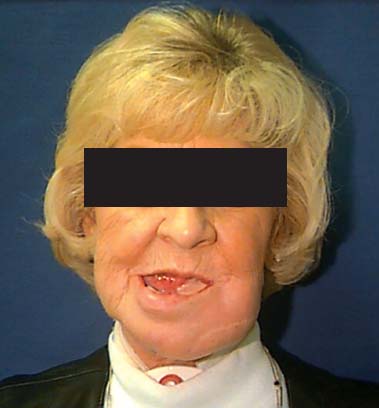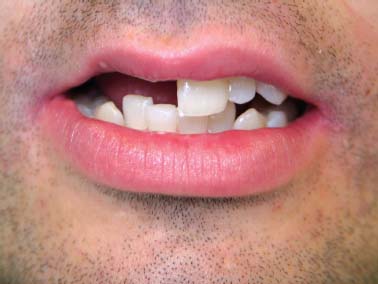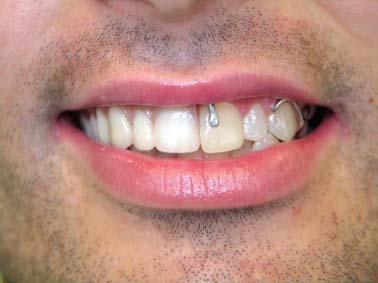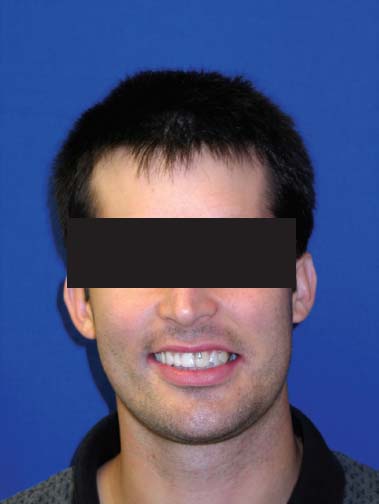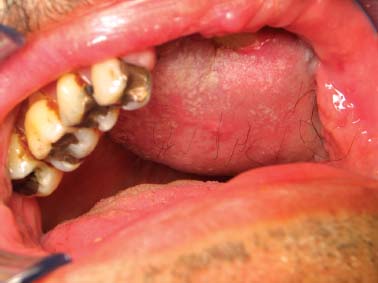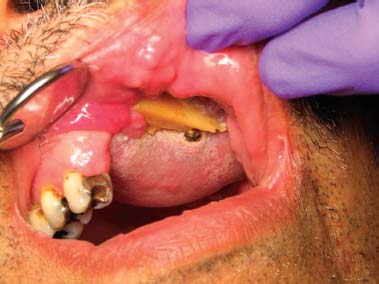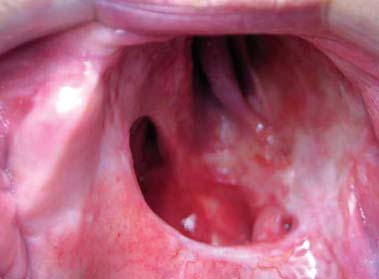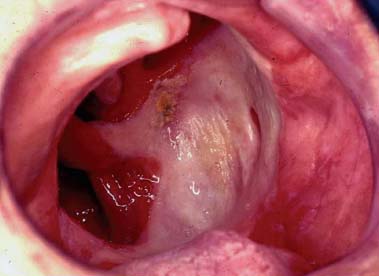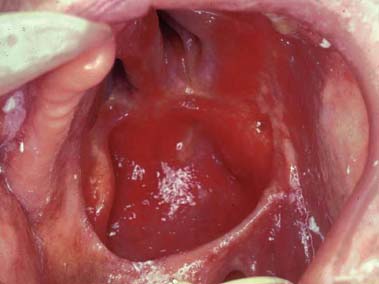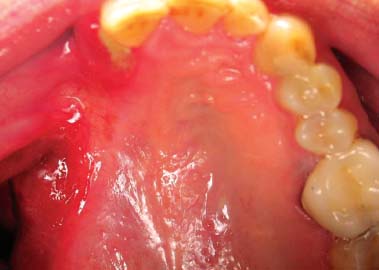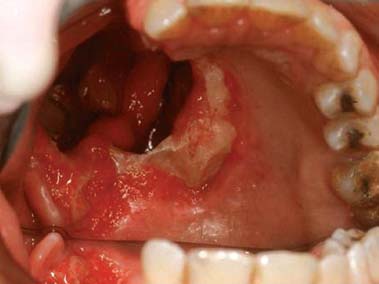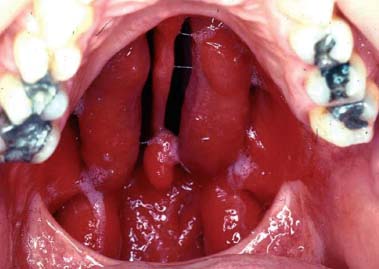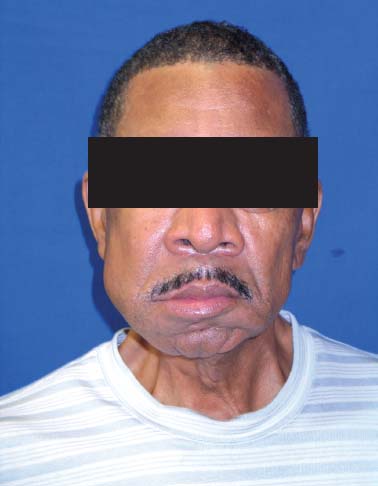30 Core Messages • Defects of the maxillofacial complex are due to tumor surgery, a congenital condition, or trauma. • They affect function and esthetics and have a great effect on a patient’s quality of life. • Surgical reconstruction alone may not completely resolve these problems. • Oral and facial prostheses restore function and esthetics either alone or in conjunction with reconstructive surgery. • The prosthesis covers and protects sensitive tissues, restores oral and facial anatomy and function, improves psychological well-being and quality of life. • Successful maxillofacial rehabilitation requires a team approach. • The prosthesis may serve as an interim measure until reconstructive surgery is performed or as definitive treatment. Although head and neck cancers make up less than 5% of all cancers,1 the resulting hard and soft tissue deficits, either intraorally or extraorally, can present a difficult challenge to the reconstructive surgeon and maxillofacial prosthodontist. The successful outcome depends on a team approach to both resection and rehabilitation. The maxillofacial prosthodontist is an integral part of the team approach from diagnosis to treatment to rehabilitation.2 With advances in microvascular surgery, vascularized free flaps, distraction osteogenesis, and other improvements in hard and soft tissue grafting, surgical reconstruction is a viable option in many cases. However, not all situations are amenable to surgery alone. Surgical reconstruction may be limited by the size or location of the defect, quantity and quality of available tissue, the patient’s physical and/or mental health, or their personal wishes regarding reconstructive surgery. Prosthetic rehabilitation instead of, or in conjunction with, reconstructive surgery may be a viable alternative to achieve the goals of functional, esthetic, and psychosocial normalcy. Intraoral defects include tumors of the tongue, floor of the mouth, mandible, and adjacent structures as well as maxillary defects of the hard and soft palate. There are significant differences between maxillary surgical defects and mandibular surgical deficits with respect to quality, mode, and effectiveness of rehabilitation, the role of surgical reconstruction, and psychosocial profiles.2 The goal of rehabilitating hard and soft palate defects and mandibular defects is to restore, to some degree of normalcy, functions of speaking, swallowing, and chewing. Rehabilitation of acquired hard and soft palate defects usually can be restored to close to normal function and physical appearance with an obturator prosthesis (Figs. 30.1 to 30.3).2–5 The use of surgical reconstruction of both hard and soft palate defects is gaining acceptance.6–12 However, surgical reconstruction of hard and soft palate defects still has not been shown to have better functional outcomes (Beumer J, Garrett N. Personal communication, 2010). There are some preliminary reports that show promising results with surgical reconstruction.8–12 With respect to mandibular defects, the use of free vascularized tissue flaps and dental implants have revolutionized our ability to rehabilitate these patients (Figs. 30.4 to 30.6).13 Although many advances have been made, many patients with surgical resections of the tongue, mandible, and adjacent soft tissues still have functional disabilities of speech, mastication, and deglutition (Fig. 30.7). Control of saliva is difficult, and xerostomia, a side effect of radiation, compounds the problems with deglutition. Patients with mandible/tongue deficits generally have a greater alteration in their quality of life than do patients with maxillary deficits of the hard and soft palate.13 Extraoral defects involve defects of the auricle, orbit, nasal, or midfacial region. The decision between surgical reconstruction of a facial defect and a prosthetic restoration should be made based on several general guidelines while taking into consideration the specifics of each case. The natural history of the tumor, the size and location of the defect, the quantity and quality of available tissue, the patient’s physical and/or mental health, and their personal wishes regarding reconstructive surgery should be considered. As a rule, it is difficult for the surgeon to reconstruct a facial part that is as cosmetic as a well-made prosthesis (or in as little time), although a surgical reconstruction does result in an autologous, nonartificial outcome that does not require the maintenance of a prosthesis.14 Figure 30.7 Mandibular reconstruction with resulting disabilities of speech, mastication, and deglutition. There is limited information in the literature to confirm that a facial prosthesis restores lost function. In a pilot study, Reisberg and Lipner15 demonstrated some limited improvement in hearing with an ear prosthesis. However, an orbital prosthesis does not restore sight and there are no data to indicate improved function with a nasal prosthesis. It should not be overlooked, however, that in addition to restoring normal anatomic contour, a facial prosthesis does cover and protect the sensitive soft tissues of a facial defect. What is even more important is to recognize the benefit of a facial prosthesis in improving the quality of life of a cancer victim. Whatever be the method of rehabilitation for either intraoral or extraoral defects, a team approach is necessary for a successful outcome. The team should consist of not only medical and dental specialists but allied health professionals as well. A comprehensive oncology team includes an otolaryngologist/head and neck surgeon, plastic and reconstructive surgeon, maxillofacial prosthodontist, medical oncologist, radiation oncologists, dental oncologist, speech and language pathologist, dietician, nurse, social worker, and psychologist. From the outset, rehabilitation becomes part of the overall treatment plan. Communication between team members is a key to success. A weekly team meeting to discuss new patients and monitor the progress of those receiving care is useful. Several factors influence the decision of either surgical or prosthetic reconstruction. For example, the etiology, size, and location of the defect influence the reconstructive options.2 As a general rule, defects resulting from trauma are more amenable to surgical reconstruction whereas defects resulting from malignant tumor ablation tend to do better with prosthetic reconstruction. Plank et al,16 Rieger et al,4 and Sullivan et al17 found that speech and swallowing can be restored to normal levels in almost all patients with an obturator prosthesis with adequate retention (Figs. 30.8 to 30.10). Defects from benign tumors can have surgical reconstruction if the margins are negative; however, some advocate a waiting period of 2 years before surgical reconstruction with prosthetic obturation used as an interim measure. Patients with either midline granuloma or mucormycosis are not candidates for surgical reconstruction when the disease is in an active state.2 Defects resulting from adenoid cystic carcinoma are not candidates for surgical reconstruction because of its propensity for recurrence.2 Small defects of the alveolar ridge and hard palate can be easily closed surgically with local flaps, whereas larger hard palate defects are more amenable to prosthetic obturation or to free vascularized osteocutaneous tissue flaps such as the fibula. The fibula with its bicortical bone provides an ideal placement for osseointegrated implants and can be easily osteotomized to provide favorable alveolar ridge contours. The use of these flaps is particularly desirable for restoration of total palatectomy defects and for total maxillectomy defects. The success of surgical reconstruction is proper planning with the maxillofacial prosthodontist, so the patient can be rehabilitated with dental implants.8,9 If the surgical reconstruction is not properly planned, prosthetic rehabilitation may not be possible because of poorly contoured bulky tissues, lack of suitable bone volume for dental implant placement, and improper positioning of the bone (Figs. 30.11 and 30.12). Generally, younger patients are better suited for surgical reconstruction. Patients who are incapable of wearing an obturator prosthesis, such as a patient with Alzheimer disease, would be more amenable to surgical reconstruction. Rohner et al8,9 and Jaquiéry et al6 have reported on the successful use of computer-aided design and computer-aided manufacturing technologies using a combined surgical and prosthodontic approach. The success of the technique depends on multidisciplinary treatment planning and communication. This technique advocates preplanning the maxillary surgical reconstruction based on the occlusion and the opposing mandible configuration. A free vascularized bony flap, usually the fibula, is used to replace the missing alveolar bone and to retain an implant prosthesis. This technique uses a two-stage procedure by placing implants in the donor bone and creating a new perimplant tissue by placing a split thickness skin graft around the implants. The second stage involves harvesting the bone and osteomized the bone and securing it to the preprepared prosthesis. The bone is then attached to the residual maxilla and skull base to create a new maxilla. Any remaining palatal defect can be closed with either an overlay denture or soft tissue flaps. As a general rule, soft tissue flaps should not be used to close large palatal defects. Soft tissue flaps such as a radial forearm flap distort palatal contours and the mobility of the soft tissues makes prosthetic rehabilitation with a removable partial denture difficult. It is important that the patient be informed, before surgical resection, that prosthetic rehabilitation may not be possible with the use of soft tissue flaps. The buildup of mucus on the nasal side of the defect creates a strong unpleasant odor for some patients. Also, facial contours, particularly the lip and cheek area, are compromised with soft tissue flaps.2 Functional outcomes of speech and mastication are also compromised with this flap.18 The inability to fabricate a removable partial denture prosthesis compromises masticatory efficiency. Matsui et al18 found that with the loss of anterior dentition and normal palatal contours, normal speech cannot be effectively restored with these flaps, particularly the lingual dental, lingual alveolar, lingual palatal, and velar consonant speech sounds. The exception would be a patient who was not capable of proper hygiene of the defect, nor had the manual dexterity required for an obturator prosthesis. Prosthetic rehabilitation consists of three distinct phases: surgical, interim, and definitive obturation. The surgical phase involves the placement of an immediate surgical obturator at the time of surgical resection. Its purpose is to restore and maintain oral functions of speaking and swallowing during the initial postoperative therapy. The interim obturator phase begins at the unpacking visit of the immediate surgical obturator. It still provides speaking and swallowing functions until healing is complete. Usually, this obturator will require multiple relines during the healing phase. The definitive obturation phase usually begins 3 to 6 months after surgical resection.2 The patient is evaluated with the maxillofacial prosthodontist. During this appointment, a thorough dental examination with recording of the periodontal evaluation and restorative charting is accomplished. Impressions for diagnostic casts, a jaw relationship record, and dental radiographics can be made. Depending on the clinical situation and the timing of the surgical procedure, a dental prophylaxis can be accomplished along with restoration of carious teeth. Dental extractions can be coordinated at the time of surgical resection. Most importantly, a discussion with the patient concerning the advantages and disadvantages of prosthetic rehabilitation is accomplished. Once a decision is made concerning prosthetic rehabilitation, the maxillofacial prosthodontist and the resection surgeon communicate as to the best method to prepare the defect for the prosthesis. It is critical that the surgeon understand that the success of the prosthesis is in large part related to how well the defect is prepared for the prosthesis. Surgical resection of hard palate defects usually can be rehabilitated quite easily with an obturator prosthesis. As Curtis and Beumer2 outlined, the goals of an obturator prosthesis are to restore partition between the nasal and oral cavities, restore palatal contours, maintain tongue space, replace the missing dentition, restore midfacial contours, and provide retention, stability, and support for the obturator prosthesis without compromising the health of the residual dentition and supporting structures. With proper communication between the resection surgeon and the maxillofacial prosthodontist, a defect can be optimized to accept a prosthesis without a compromise in the surgical resection of the tumor. The more of the hard palate, particularly the premaxillary segment, that can be preserved without compromising tumor control contributes to increased stability and support for the obturator prosthesis (Fig. 30.13). The premaxillary segment is the most desirable site for implant placement in the edentulous patient. Preservation of the premaxillary segments allows an increased number of implants to be placed while increasing the anterior-posterior spread of the implants. From a biomechanical standpoint, the greater the anterior-posterior spread of the implants, the greater the retention of the obturator prosthesis and the greater the ability of the obturator prosthesis to withstand the forces of mastication.2 Figure 30.13 Linear arrangement of alveolar arch reduces stability and support of the obturator prosthesis. Lining the reflected cheek flap with a split thickness skin graft allows the maxillofacial prosthodontist to engage the scar band, resulting in an improvement of the retention and stability of the obturator prosthesis. This skin-lined surface is a more suitable prosthesis-bearing surface. It also increases flexibility of the cheek, allowing the maxillofacial prosthodontist to displace the cheek on the resected side, resulting in a relatively normal midfacial symmetry (Fig. 30.14). If this is not done, the reflected cheek flap will granulate and will be surfaced with either respiratory mucosa or poorly keratinized squamous epithelium, resulting in a more irritation of the prosthesis to the reflected cheek surface (Fig. 30.15). Skin grafting the raw tissue surfaces of total palatectomy defects is particularly crucial with anterior defects. Skin grafting prevents contraction of the upper lip, resulting in an obturator prosthesis with which the patient can function. For total maxillectomy procedures, the resection surgeon should consider skin grafting the sinus side of the floor of the orbit. If possible, engaging this surface with the obturator prosthesis will improve support; however, for patients with postsurgical trismus, this may not be possible to engage.2 Figure 30.14 Skin grafting the defect increases stability and retention of the prosthesis. Image Courtesy: Dr. John Beumer. Surgical resection through the transeptal bone approximating the tooth of the defect side results in loss of bony support with eventual loss of the tooth (Fig. 30.16). Therefore, transalveolar resections should be made as far as possible from the tooth beside the proposed defect. The next distal tooth should be extracted. This allows the surgeon to make transalveolar cuts through the middle or distal of the socket, resulting in more bony support. The abutment tooth adjacent to the defect is one of the many fulcrums that the obturator prosthesis will rotate around. This additional bony support improves the clinical viability of the tooth. If oncologically sound, the cuspid tooth provides greater bony support than the lateral incisor and should be preserved if possible.2 Figure 30.15 Respiratory mucosa is a poor prosthesis-bearing surface. Image Courtesy: Dr. John Beumer. The medial bony margin of the palatal bones should be rounded and covered with palatal mucosa or a skin graft. This allows the maxillofacial prosthodontist to engage the surface, enhancing the lateral stability of the obturator prosthesis. The medial bony margin is a fulcrum for the obturator prosthesis to rotate during function for the edentulous patients. If allowed to granulate in, the poorly keratinized squamous epithelium or respiratory mucosa is an inadequate prosthesis-bearing surface (Fig. 30.17).2 If the tumor resection involves more than two thirds of the soft palate, then the resection surgeon should remove the remaining one third of the posterior aspect of the soft palate for dentate patients. The levator veli palatini muscle, located in the middle third of the soft palate, is responsible for elevating the soft palate. Leaving a nonfunctional band of soft palate intact posteriorly interferes with access for proper obturation to achieve velopharyngeal closure during speech and swallowing, resulting in hypernasal speech and leakage of fluids into the nose. The exception to the rule is for edentulous patients who have had a total maxillectomy. The posterior band of soft palate in this situation allows extension onto the nasal side, aiding in retention of the obturator prosthesis.2 Figure 30.18 Need to remove turbinates to have access to the defect. Image Courtesy: Dr. John Beumer. Removal of the turbinates and bands of oral mucosa allows the maxillofacial prosthodontist access to the superior and lateral aspects of the defect (Fig. 30.18). Engaging the lateral nasal side of the orbital floor along with extension of the obturator prosthesis up the lateral wall of the defect increases retention and stability of the obturator prosthesis. The exception is midline defects of the hard-soft palate junction. Extension superiorly for these defects is not as critical as in larger defects.2 Osseointegrated implants have improved the prosthetic prognosis immensely for edentulous patients undergoing a maxillectomy. Garrett3 has shown that placement of osseointegrated implants will dramatically improve the function of the obturator prosthesis, particularly for edentulous patients. Usually, the implants can be placed after tumor resection in the premaxillary segment and the maxillary tuberosity or placement can be delayed. The alveolar arch below the maxillary sinus, if present, can be used for implant placement. It is not recommended to place implants within the defect itself because of difficulty in adequate hygiene of the implants. For patients receiving postoperative radiation therapy, implant placement should be delayed if the implant site is to receive excess of 60 Gy. Scwartz et al19 and Mian et al20 found that the backscatter of radiation from the implant increases the radiation dose to the bone by an additional 11 to 15%, resulting in nonvital bone. If intensity-modulated radiation therapy is used, it is advantageous to reduce the dose to the implant site, if oncologically sound.2 The immediate surgical obturator is placed at the time of surgical resection and is made of acrylic resin. The prosthesis may or may not have teeth. Surgical packing is used in the defect and the prosthesis is either wired or screwed into place. This prosthesis is used for either edentulous or dentate patients requiring a partial or total maxillectomy or a partial or total palatectomy. The advantages of an immediate surgical obturator include maintaining the surgical packing in place, ensuring close adaptation of the split thickness skin graft to the raw surfaces of the cheek flap; reducing oral contamination of the wound; reducing the incidence of local infection; enabling the patient to speak more effectively; proper deglutition, eliminating the need for nasogastric tube; lessening the psychological effect of surgery; and reducing the period of hospitalization. The immediate surgical obturator is placed for 7 to 10 days. At the unpacking visit, either the surgical obturator is relined and used as an interim obturator or a new interim obturator is delivered to the patient.2 The purpose of the interim obturator is to maintain patient comfort and function during the healing phase. A new prosthesis is fabricated if the surgical resection was different from the presurgical resection plan. Fabrication of a new prosthesis allows the addition of the teeth, which aids the patient psychologically and helps to restore occlusal contact on the defect side, increasing retention and stability. The interim obturator prosthesis will need relines every 4 to 8 weeks to account for tissue changes within the defect.2 Three to four months after surgery or after adequate healing of the defect, fabrication of the definitive obturator prosthesis may begin. Soft tissue changes of the defect will continue at least for 1 year. Patient factors such as the prognosis for tumor control and the general health and desire of the patient have to be considered in treatment planning for the definitive obturator prosthesis. If implants have been placed at the time of surgical resection, implants will need to be exposed with adequate healing of the periimplant tissues. In certain situations, it may be decided to proceed ahead with implant placement at this time. This will delay the fabrication of the definitive obturator. Roumanas et al,21 Hoshaw et al,22 Miyata et al,23 and Miyamoto et al24 have shown that implants are subjected to overload, resulting in bone loss and subsequent loss of the implants. To prevent implant overload, treatment planning of implant tissue bar designs must be implant assisted and accommodate multiple axis of rotation of the obturator prosthesis. Davis et al25 found that implant-assisted designs resulted in less stress around the implants and hence less overloading of the implants. Of note, the successful use of zygoma implants has been reported by Schmidt et al11 for patients with large or total palatectomy defects. They recommend placement of two zygoma implants into each residual zygoma and splinting all four implants together with a tissue bar. Landis et al26 also reported on the use of zygoma implants in this patient population and found that 8 of the 36 zygoma implants placed were lost because of either implant overload and/or chronic infections or resection of recurrent disease. Both Matsuyama et al27 and Koyama et al28 found that the remaining maxillary dentition is a critical factor in the restoration of masticatory function. Each found that maxillectomy patients with residual dentition to support an obturator prosthesis had masticatory efficiency that was not that significantly different from dentate controls. Garret3 found significant improvement in masticatory performance on both the defect side and the nondefect side with the use of osseointegrated implants for edentulous patients. Although these improvements reach the level of a conventional edentulous patient restored with an implant-supported prosthesis, their performance levels still remained lower than dentate individuals. Watson and Gray29 found air leakage of the obturator prosthesis by using either simple lung function tests or sequential radiographic assessment of a radiopaque liquid during swallowing. The authors theorized that during forced exhalation, the soft tissues peripheral to the obturator contract more, leading to an improved seal and found leakage more likely to occur during sustained exhalation. The use of contrast medium showed most leakage around the obturator, particularly along the posterior-medical and posterior-lateral margins of the defect when the obturator is improperly contoured in those areas. Leakage may also occur most posteriorly during swallowing because of movement of the soft palate. In addition, the functional movement of the coronoid process posterolaterally may contribute to leakage. The authors concluded that complete and total closure may be unobtainable at times, but a sufficient level of obturation exists to permit acceptable speech and swallowing. Minsley et al30 found the oral opening around the definitive obturator was less than 0.05 mm, which did not significantly affect speech but may lead to the leakage of fluids into the nasal cavity during swallowing. The size and location of the defect significantly affect the restoration of speech. There have been several studies that have reported normal speech after the placement of an obturator prosthesis for patients with acquired surgical defects of the maxillae.31,32 Plank et al16 found speech intelligibility for both dentate and edentulous patients rehabilitated with an obturator prosthesis after surgical resection to be 98.8% intelligible presurgically, 92.1% intelligible with an immediate surgical obturator, and 97.3% correct with their definitive obturator. A patient with a bilateral maxillectomy defect exhibited a 12% reduction in speech intelligibility with the definitive prosthesis. Sullivan et al17 found a 30% improvement in the mean speech intelligibility ratings with an obturator prosthesis compared with no prosthesis. Communication effectiveness was restored to 75% of the original level with the obturator prosthesis compared with the level before the cancer resection. Hypernasality was found to have a strong correlation with communication effectiveness. A 95% or greater intelligibility score was obtained with obturation for all defects except for the combined unilateral hard and soft palate. Rieger et al4 found that average speech with obturation was not significantly different from the preoperative speech. In a study of 47 maxillectomy patients who had worn an obturator for at least 5 years, Kornblith et al33 found that satisfactory functioning of the obturator was significantly related to psychological adjustment and quality of life. They concluded that a well-functioning obturator significantly improves quality of life. They also concluded that the most significant predictor of obturator function was the extent of soft palate resection. In a study evaluating quality of life in patients with obturator maxillectomy compared with similar patients who had surgical reconstruction, Rogers et al5 found no statistically significant difference in patient perceptions between the 28 patients with obturators and the 18 patients undergoing surgical reconstruction. Just as with hard palate defects, rehabilitation of soft palate defects requires a multidisciplinary team approach with communication between all members of the team, particularly the surgeon, speech and swallowing pathologist, and the maxillofacial prosthodontist. Soft palate defects usually affect resonance of speech. The major determinant of resonance balance is the degree of velopharyngeal closure.34 Other factors such as tongue position35–37 relative to velar elevation and the structural resistance within the nasal cavity38 also influence the resonance balance. Several differences exist between hard and soft palate defects.34 Usually, hard palate defects are of a static nature with very little movement. In contrast, soft palate defects are of a dynamic nature that must function in concert with surrounding moveable tissues. The goal of a hard palate obturation is to separate the oral cavity from the nasal cavity. Superior extension of the obturator for hard palate defects improves retention, support, and stability of the prosthesis. The goals of soft palate obturation are to control nasal emission during speech and to prevent the leakage of material into the nasal passage during swallowing.39 Soft palate defects are rarely in the soft palate alone. Many of the resections that affect the soft palate originate in the tonsil, retromolar trigone, base of tongue, oropharynx, or nasopharynx. In recent years, prosthetic obturation was considered the treatment of choice for soft palate rehabilitation. When properly prepared for a prosthesis, soft palate obturation was highly predictable and the treatment of choice. Surgical reconstruction often resulted in excessive scarring and impaired movement. The end result was a deficient, nonfunctioning velopharyngeal mechanism. Many times, prosthetic obturation was not possible because of limited access to the residual velopharyngeal mechanism. Rieger et al40 and Seikaly et al41 have reported on soft palate reconstruction with excellent function results. Reconstruction of soft palate defects is becoming more popular but requires a multidisciplinary approach. The success of either surgical or prosthetic rehabilitation depends on communication between the maxillofacial prosthodontist and the surgeon. Prosthetic rehabilitation depends on the mobility of the residual velopharyngeal mechanism and access to the areas of movement and the quality of retention available for the obturator prosthesis. In many clinical situations, the raw surfaces of the defect are lined or closed with a radial forearm free flap and the prosthodontist has to restore a nonfunctional velopharyngeal defect. If the opposite lateral pharyngeal wall exhibits movement and the prosthodontist has access to engage the dynamic areas during velopharyngeal function, then speech and swallowing can be restored to normal limits. If there is limited movement of the soft tissues peripheral to the defect, then speech will not be normal with either prosthetic obturation or surgical reconstruction. Zlotolow42 reported that the movement of at least one lateral wall is necessary for either method of rehabilitation. Once a decision is made to proceed with prosthetic obturation, the surgeon needs to prepare the soft palate defect for the prosthesis. If the tumor resection involves more than two-thirds of the soft palate, then the resection surgeon should remove the remaining one-third of the posterior aspect of the soft palate for dentate patients. The levator veli palatini muscle, located in the middle third of the soft palate, is responsible for elevating the soft palate. Leaving a nonfunctional band of soft palate intact posteriorly interferes with access for proper obturation to achieve velopharyngeal closure during speech and swallowing, resulting in hypernasal speech and leakage of fluids into the nose. The exception to the rule is for edentulous patients who have had a total maxillectomy. The posterior band of soft palate in this situation allows extension onto the nasal side, aiding in retention of the obturator prosthesis. If the resection stops short of the midline, then it is possible to reconstruct the unilateral soft palate defect with a vascularized free flap. If more than one half of the soft palate is to be resected, the residual portion of the soft palate should not be connected to the free flap. If the free flap is connected to the residual soft palate, speech is compromised. Also, if more than one half of the soft palate is to be resected, the residual soft palate should not be tethered to the hard palate or the lateral pharyngeal wall. This limits the movement of the levator muscle and limits access to the lateral pharyngeal area on the side opposite the resection. It is better for the residual portion of the soft palate to hang free. Doing this will allow maximum movement of the velopharyngeal mechanism and will allow access for proper obturation.34 Fabrication of a soft palate obturator requires close communication with the speech and swallowing pathologist. Working in a large tertiary center provides an environment where specialized equipment such as nasal videoendoscopy and pressure airflow equipment are readily available. The use of this equipment allows better visual inspection and useful information in the fabrication process. It has been shown that better speech outcomes are achieved with the aid of nasal videoendoscopy for prosthetic rehabilitation of soft palate defects.43 Several reported studies44–46 have also advocated the use of pressure airflow equipment to determine the velopharyngeal orifice opening and nasal airflow. Immediate surgical obturation may or may not be indicated depending on the clinical situation. For example, immediate surgical obturation is useful for dentate patients, in which the whole soft palate is resected. In contrast, for edentulous patients, delayed obturation may be indicated. As it is not possible to obtain an impression of the nasopharynx before surgical resection and of the dynamic movements of the velopharyngeal mechanism before surgical resection, delayed obturation may be preferred. If an immediate surgical obturator is used, it is imperative that the posterior margins of the obturator be short so as not to cause an interference with either the lateral or posterior pharyngeal walls.34 Because of the frequent relines during the postsurgical treatment phase resulting often in a heavy and uncomfortable prosthesis, an interim obturator may need to be fabricated. The interim obturator may be used as a guide for the initial contours of the definitive prosthesis.34 The primary prognostic indicator of either surgical or prosthetic reconstruction is a reasonable movement of the residual velopharyngeal mechanism during function.47–50 Of particular importance is lateral pharyngeal wall movement to control nasal emission. Curtis and Beumer34 outlined the guidelines for soft palate obturation as follows: (1) obturation should be located in the nasopharynx at the level of normal velopharyngeal closure; (2) inferior margin of the obturator should not extend below the lower level of muscular activity exhibited by the residual velopharyngeal mechanism; (3) superior margin of the obturator should not extend above the level of muscular activity; (4) inferior extension of the obturator usually is an extension of the palatal plane as extended to the posterior pharyngeal walls; and (5) oral side of the obturator should be concave to accommodate for tongue movement during swallowing. Special consideration should be given for the edentulous patients with soft palate defects. Because of a lack of retention, placement of osseointegrated implants may be advantageous. Two implants in the cuspid region provide adequate anterior-posterior spread, providing adequate retention for the soft palate obturator.34 A palatal lift prosthesis is fabricated for patients with velopharyngeal incompetence. Palatal incompetence occurs when patients with normal velopharyngeal structures lack movement to affect velopharyngeal closure. This occurs most often in patients who have some type of neurological disorder secondary to a cerebrovascular accident or a neurological disease such as myasthenia gravis or closed head injuries. The palatal lift displaces the soft palate to the level of normal palatal elevation to affect closure by pharyngeal wall action. In contrast, palatal insufficiency refers to patients with inadequate length of the soft palate to affect velopharyngeal closure; however, the remaining structures have normal movement. For palatal insufficiency, an obturator prosthesis is indicated.34 Rehabilitation of mandibular defects requires a multidisciplinary approach to successful rehabilitation. For many years patients with mandibular defects were known as the “forgotten patients.” The use of free tissue transfers along with dental implants has made a dramatic effect on mandibular reconstruction (Figs. 30.19 and 30.20). The fibula is an ideal donor site because it has adequate bony support for the placement of dental implants and prosthetic rehabilitation. The goals of mandibular reconstruction—form and function—are met if the reconstructed mandible is positioned close to the original position of the native mandible. In addition, prosthetic rehabilitation is much easier to achieve if the bony support is properly positioned and contoured. This allows adequate intercuspation and occlusion of remaining teeth and a proper jaw relationship of the maxilla and mandible for prosthetic rehabilitation. This aids in proper positioning of the condyles within the temporomandibular joint, thus minimizing dysfunction. Anatomically, the position of the bone along the lower border of the mandibular body and symphysis region is critical to success. Positioning the reconstructed bone along the lower border of the mandibular body complicates implant placement. The use of dental implants may result in a cantilever effect, particularly if the bony support is not of substantial size. Attention must be given to the periimplant soft tissues for successful rehabilitation. It is preferred that the oral portion of the reconstructed mandible be surfaced with keratinized attached epithelium. This contributes to successful prosthetic rehabilitation with either a conventional removable partial or complete denture or an implant prosthesis.13 Rehabilitation, hence, requires the efforts of both the reconstructive surgeon and the maxillofacial prosthodontist working in concert. Of late, the use of computer-aided surgical planning software (SurgiCase, Materialise Helm Court, Plymouth, Michigan, United States) along with the increased use of three-dimensional models has allowed better reconstruction outcomes. The use of this software allows the reconstruction of plates to be preformed before resection. It also allows the osteotomy cuts to be planned either with the three-dimensional model or with surgical planning software. The use of the prefabricated surgical guides and implant drill guides can be planned before resection. It is hoped that the end result is positioning of the reconstructed mandible in the proper maxillomandibular relationship to aid in prosthetic rehabilitation.
Prosthetic Rehabilitation: Intraoral and Extraoral Prostheses
Team Approach
Intraoral Defects: Hard Palate Defects
Surgical Reconstruction versus Prosthetic Reconstruction
Prosthetic Rehabilitation
Initial Treatment Phase
Surgical Modifications
Hard Palate Resection
Skin Grafting the Defect
Retention of Teeth Adjacent to the Defect
Palatal Mucosa
Soft Palate Resection
Access to the Defect
Osseointegrated Implants
Surgical Obturation
Interim Obturation
Definitive Obturation
Functional Outcomes
Masticatory Performance
Air and Fluid Leakage
Speech
Quality of Life
Intraoral Prostheses: Soft Palate Defects
Surgical Reconstruction versus Prosthetic Obturation
Surgical Modifications
Prosthesis Evaluation
Immediate Surgical Obturation
Interim Obturation
Definitive Obturation
Palatal Lift Prosthesis
Intraoral Prostheses: Mandibular Defects
< div class='tao-gold-member'>
Prosthetic Rehabilitation: Intraoral and Extraoral Prostheses
Only gold members can continue reading. Log In or Register to continue

Full access? Get Clinical Tree


